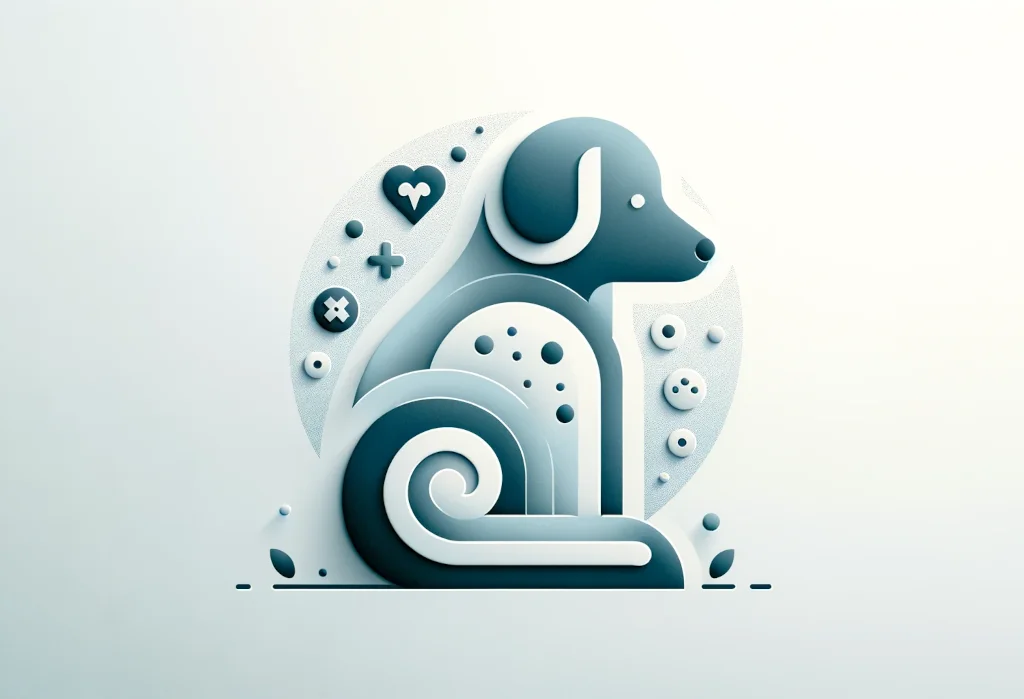It’s one of those days when Fido just isn’t himself, and it’s hard to put your finger on why. Watching your once-energetic pup mope around with little interest in fetch can be heart-wrenching.
In this blog post, you’ll discover key insights into recognizing Addison’s Disease in your furry friend and how to provide the best care to manage this condition.
Key takeaways:
- Look for warning signs like lethargy, vomiting, increased thirst, shivering, and muscle weakness as they may indicate Addison’s Disease in your dog.
- If you suspect Addison’s, consult your vet immediately for an ACTH stimulation test and comprehensive metabolic panel to avoid misdiagnosis.
- Effective management includes strict medication adherence, regular vet check-ups, and stress reduction to ensure a quality life for your dog.
What Is Addison’s Disease in Dogs?
Addison’s Disease, technically known as hypoadrenocorticism, is a condition that strikes when a dog’s adrenal glands aren’t pumping out enough hormones—namely cortisol and aldosterone.
These hormones are heavy hitters; cortisol for managing stress and aldosterone for regulating potassium and sodium levels. So, when they’re in short supply, a dog’s body isn’t exactly running like a well-oiled machine. Though it can sneak into any dog’s life, Addison’s Disease often has a soft spot for young female pooches.
Now, why are these glands slacking, you might ask? Well, it can happen if the immune system gets a bit overzealous and attacks the adrenal glands or due to some other damage. And sometimes, the cause remains a mystery. Catching this culprit early is crucial because it can cloak itself as other ailments, and without treatment, it can lead to an Addisonian crisis, a life-threatening emergency.
What Are the Telltale Signs My Dog Might Have Addison’s Disease?
So, what should you keep your eyes peeled for? Let’s talk telltale signs. Addison’s can be a bit of a sneak; its symptoms often lurk in the shadows and can be mistaken for other health hitches. Your furry friend might show:
- Lethargy: Is your usually perky pup lounging around more than usual?
- Vomiting: Sporadic upchucks may not always be due to nibbling on yesterday’s leftovers.
- Diarrhea: No one likes to talk about it, but sudden, unexplained changes in bathroom habits are a red flag.
- Increased thirst: If your pooch is guzzling water like there’s no tomorrow, it could be a sign.
- Shaking or shivering: More than just a case of the chills.
- Muscle weakness: Struggling to leap up or losing steam on walks quicker than before.
Observing these changes is about as pleasant as a wet dog at a tea party, but crucial for your dog’s well-being. Keep tabs on any shifts in behavior or routine, and if you spot a combination of these symptoms, it’s time to chat with your vet.
How Is Addison’s Disease Diagnosed in Dogs?
Nailing down a diagnosis for Addison’s Disease is like piecing together a puzzle. Your vet is the puzzle master here, starting with a thorough history and physical exam. Then, it’s on to blood tests, where the magic happens. The most telling test is the ACTH stimulation test, which checks out how your dog’s adrenal glands respond to the adrenocorticotropic hormone.
Here’s the rundown:
- Baseline cortisol level is measured with a simple blood draw.
- ACTH injection: Your dog gets a dose of synthetic ACTH.
- Follow-up cortisol level is measured after the injection.
If your dog’s cortisol levels don’t rise as they should, you might be dealing with Addison’s. Alongside the ACTH test, the vet may order a comprehensive metabolic panel to check for other culprits like kidney function issues. Navigating the diagnosis requires your vet’s expert eye to piece together the information and rule out other conditions.
Remember, this isn’t the closing chapter of Fido’s adventure. Once you’ve got a handle on Addison’s, the focus shifts to keeping those tails wagging with lifelong care and management. Stay tuned for more on giving your pooch the best life, even with Addison’s hitching a ride.
What Can You Do to Manage Your Dog’s Addison’s Disease?
Living with a dog diagnosed with Addison’s Disease can be daunting, but with the right management plan, your furry pal can still lead a happy and comfortable life. Here are some practical tips to help you navigate this new terrain:
-
Medication Management: Your vet will likely prescribe corticosteroids and mineralocorticoids to replace the hormones that your dog’s adrenal glands are no longer producing. It’s crucial to administer these medications exactly as prescribed. Some dogs may need daily pills, while others might be on a monthly injectable medication like DOCP (desoxycorticosterone pivalate).
-
Regular Vet Check-Ups: Stick to a tight schedule of regular check-ups with your vet. These will help monitor your dog’s response to treatment and adjust medication as needed. Remember, consistency is key, as the adjustment of hormone levels is a delicate process.
-
Stress Reduction: Dogs with Addison’s are more sensitive to stress, which can compound their symptoms. Reduce stress by keeping a routine, avoiding loud noises, and providing a calm environment. For instance, if you know a thunderstorm is coming, prepare a cozy, quiet space for your four-legged friend to retreat to.
- Lifestyle Adjustments:
- 1. Diet – Make sure your pup is eating a balanced diet. Speak to your vet about any dietary changes that might benefit your dog. Sometimes, an increase in salt can be recommended, but always consult your vet first.
- 2. Hydration – Keep fresh water available at all times, ensuring your dog stays well-hydrated.
- Education is Power: Arm yourself with knowledge about Addison’s Disease. The more you know, the better you’ll be able to spot potential issues before they escalate. Websites like the American Kennel Club and PetMD can be valuable resources.
Are There Long-Term Complications With Addison’s Disease?
Without a doubt, Addison’s can bring its fair share of challenges over the long haul. If not properly managed, Addison’s can lead to:
-
Chronic Fatigue: Your dog might seem more tired than usual, even with proper medication.
-
Gastrointestinal Issues: Ongoing stomach troubles can be a sign that your dog’s medication needs adjusting.
-
Electrolyte Imbalances: These can cause serious health issues, including heart problems if not monitored closely.
-
Adrenal Crisis: Possibly the most severe complication, where an imbalance of hormones can lead to collapse and, in extreme cases, death.
The good news is, with continuous treatment and attentive care, you can mitigate these risks significantly. Here’s what you need to commit to:
- Never Miss a Medication Dose: This is non-negotiable. Set reminders on your phone, use pillboxes – whatever works to ensure you’re on top of the medication schedule.
- Routine Blood Tests: These will become a part of your new normal to check electrolyte levels and organ function, helping to head off any complications at the pass.
- Heed the Warning Signs: If your dog is acting ‘off’ in any way, prompt action could save your dog’s life. Keep an eye out for signs of lethargy, vomiting, diarrhea, or changes in appetite.
The unique insight that might be overlooked is the importance of social and mental stimulation for a dog with Addison’s. Even though physical stress should be minimized, keeping your dog mentally engaged with low-impact activities can promote overall well-being and mitigate the effects of this demanding disease. Try puzzle feeders, gentle training sessions, or calm, interactive play to keep those mental gears turning without adding physical strain.
Managing Addison’s Disease in dogs isn’t just about the meds and the vet visits, it’s about creating a supportive environment that caters to your dog’s new needs. With awareness, patience, and regular care, your furry friend will have the best shot at a long, tail-wagging life. Remember, you’re not alone on this journey; your vet, online communities, and resources are there to help you and your pup adapt and thrive.
Alex, a passionate animal lover, has experience in training and understanding animal behavior. As a proud pet parent to two dogs and three cats, he founded AnimalReport.net to share insights from animal experts and expand his knowledge of the animal kingdom.





